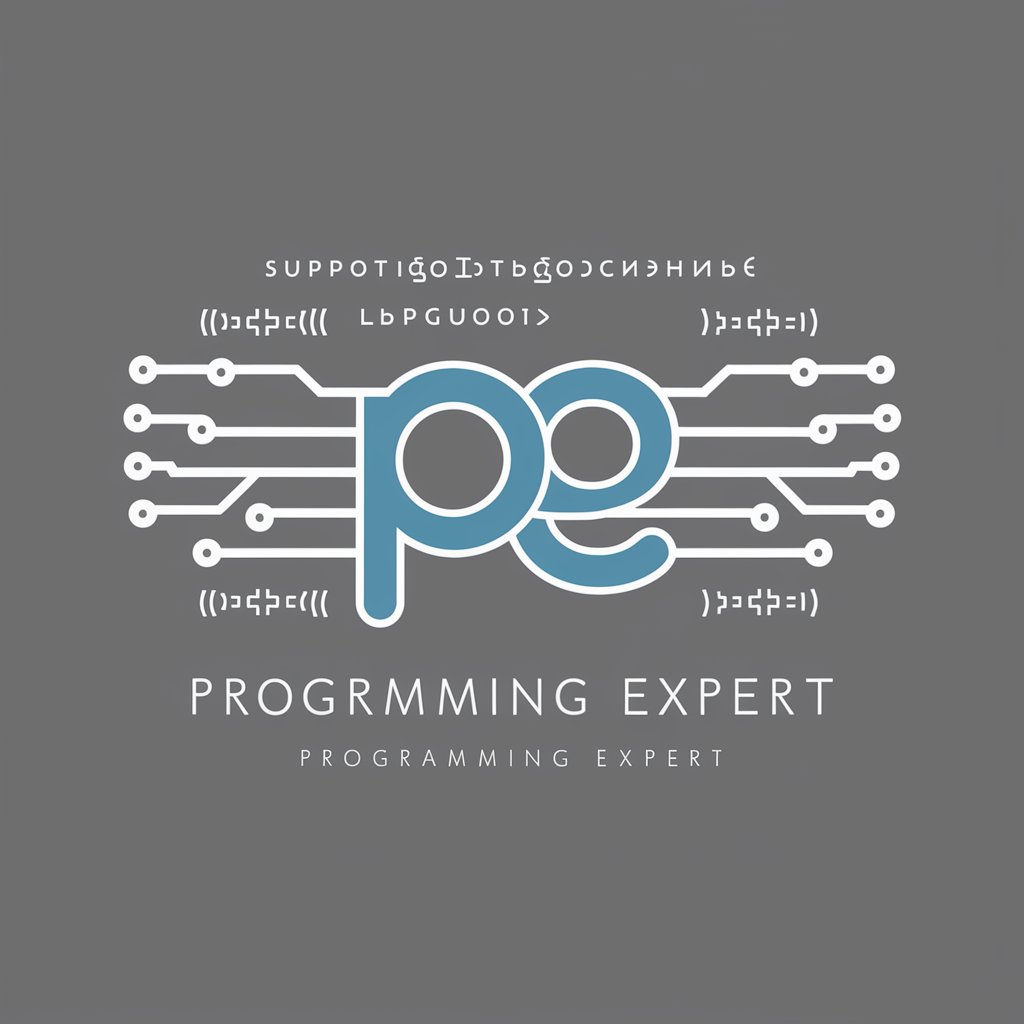
PHP-PHP tool for dynamic web development.
AI-powered PHP tool for efficient coding.

Friendly help with PHP coding, bug checks, and educational guidance.
Help me write code in PHP
Fix this PHP error:
Explain PHP sessions
Show me an example of PHP object-oriented programming
Get Embed Code
Introduction to PHP
PHP (HyperPHP introduction and functionstext Preprocessor) is a widely-used, open-source server-side scripting language primarily designed for web development. It is embedded into HTML, making it a powerful tool for creating dynamic, interactive web pages. Unlike client-side scripting languages like JavaScript, PHP runs on the server, processing logic, interacting with databases, and sending dynamic content back to the user's browser. Its main purpose is to generate HTML content based on user input, database queries, and other factors. A key aspect of PHP is its simplicity and integration with various databases (most notably MySQL), which makes it ideal for creating web applications that require database interaction. PHP can be used for a variety of tasks, including building entire websites, web applications, and content management systems like WordPress. An example is the common use of PHP in eCommerce websites where the language handles user login, product listings, and order processing. PHP operates as an interpreted language, meaning that it is executed line-by-line by the server. This is different from compiled languages like C, which are transformed into machine code ahead of time. The dynamic nature of PHP allows it to respond to real-time user actions such as form submissions, session handling, and API calls, making it ideal for interactive, data-driven websites.
Variable Handling
Example
$username = 'john_doe';
Scenario
In a typical web application, a user logs in with their credentials. PHP stores their username in a variable, such as '$username', which can then be used for personalized interactions throughout the site, such as displaying a personalized greeting or tracking their session.
Database Interaction
Example
$conn = mysqli_connect('localhost', 'username', 'password', 'database');
Scenario
One of the core strengths of PHP is its ability to communicate with databases like MySQL. For example, a user might submit a contact form on a website, and PHP would process the data by connecting to the database and inserting it into a table, making it easy to retrieve, modify, or delete data as needed.
Session Management
Example
session_start(); $_SESSION['user_id'] = 12345;
Scenario
PHP can manage user sessions, which is critical for maintaining user login states across multiple pages. When a user logs into a site, PHP starts a session and stores the user's ID or other session-specific data, allowing the website to remember the user’s identity between page refreshes or navigation.
Form Handling and Validation
Example
$email = $_POST['email']; if(filter_var($email, FILTER_VALIDATE_EMAIL)) { /* Process form */ }
Scenario
When a user submits a form (e.g., a registration form), PHP can validate the input, ensuring it meets specific criteria, such as validating an email address format before saving the data to the database or returning an error message.
File Manipulation
Example
$file = fopen('document.txt', 'r'); $content = fread($file, filesize('document.txt')); fclose($file);
Scenario
PHP can be used to interact with files on the server, enabling functions like reading, writing, or modifying files. For instance, a PHP script could be used to allow users to upload files (like images) and then store or display them on a website.
Ideal Users of PHP
Web Developers
PHP is particularly beneficial for web developers working on dynamic websites and web applications. It enables them to quickly integrate user-driven content, such as comments, user profiles, and content management systems. Developers use PHP to handle server-side logic, such as form processing, user authentication, and data storage. PHP’s broad integration with databases and ease of use makes it a go-to language for developers working on full-stack web development.
Small to Medium-Sized Businesses
Small and medium-sized businesses (SMBs) benefit from PHP due to its low cost (free and open-source) and ability to create customized websites or web applications. SMBs often require cost-effective solutions for their online presence and rely on PHP-based frameworks like Laravel or content management systems like WordPress to build and maintain dynamic websites. The ease of deployment, wide hosting support, and rapid development cycle make PHP a popular choice for businesses with limited resources.
E-Commerce Entrepreneurs
PHP is widely used in e-commerce due to its capability to integrate with shopping carts, payment gateways, and inventory systems. Entrepreneurs looking to launch or scale e-commerce platforms often rely on PHP because of its scalability and flexibility. Platforms like WooCommerce (for WordPress) or Magento are built with PHP and provide customizable solutions for managing products, orders, and customers.
Content Management System (CMS) Users
PHP is the backbone of many popular CMS platforms like WordPress, Joomla, and Drupal. Users of these CMS platforms—whether they are bloggers, content creators, or businesses—rely on PHP to power the dynamic content and features of their websites. PHP’s compatibility with various CMS plugins and themes enables users to extend the functionality of their sites and ensure that content updates, media uploads, and user interactions are processed seamlessly.
Educational Institutions
PHP is often used in educational settings for teaching web development and programming. Due to its accessibility and simplicity, PHP is ideal for beginners looking to learn web development. Educational institutions benefit from using PHP in their curriculum because it is easy to set up and provides a practical introduction to server-side programming and database interaction.
Step 1: Visit aichatonline.org
Start by visiting aichatonline.org to access a free trial. There's no need to log in or subscribe to ChatGPT Plus, making it a seamless experience to explore and get familiar with the tool.
Step 2: Install a Local Server or Hosting
Before writing PHP code, set up a local server like XAMPP or WAMP on your computer. Alternatively, you can choose web hosting that supports PHP. This enables you to run PHP scripts locally or on a remote server.
Step 3: Write PHP Code in a Text Editor
Use a text editor like Sublime Text, VS Code, or even Notepad++ to write PHP scripts. Begin with a basic PHP file: `<?php echo 'Hello World'; ?>`. Save it with the `.php` extension.
Step 4: Test and Debug Your PHP Code
Test your PHP script by opening it in a browser. If you're using a local server, navigate to `localhost/yourfile.php`. PHP errors will display in the browser, helping you debug and refine your code.
Step 5: Deploy to a Web Server
OnceHow to use PHP your PHP code is working locally, deploy it to a web server. Ensure that your hosting provider supports PHP, and upload your PHP files using FTP or via a hosting control panel.
Try other advanced and practical GPTs
CS AI SEO Topic Map GPT
AI-powered topic maps for SEO success.

审稿编辑
AI-Powered Editing for Better Writing

Solid Mechanics Tutor
AI-powered guidance for solid mechanics problems.

リアルな画像作成ツール
Create realistic images effortlessly with AI

TEXTO
AI-Powered Text Generation at Your Fingertips

Corretor de Texto Gmídia
AI-powered proofreading for flawless writing.

日本語ビジネスメール添削のプロ
AI-enhanced business email refinement for Japanese professionals.

Avocat-Fiscaliste
AI-driven legal advice for tax and business

Post With Big Insights
AI-powered insights for smarter decisions.

Italian Teacher
AI-powered Italian lessons for all levels.

RHINO
AI-powered text generation made easy

Creador de Presentaciones
Create professional presentations with AI ease.

- Web Development
- Content Management
- Database Interaction
- Dynamic Websites
- Server-Side Scripting
Frequently Asked Questions about PHP
What is PHP and why is it used?
PHP (Hypertext Preprocessor) is a server-side scripting language primarily used for web development. It allows you to create dynamic and interactive web pages. PHP is commonly used for tasks like form processing, user authentication, and interacting with databases.
Do I need a specific hosting service to use PHP?
Yes, you need web hosting that supports PHP. Most shared hosting plans support PHP by default. However, make sure your hosting provider supports the version of PHP you need for your project, as newer versions offer enhanced features and security.
What are the most common uses of PHP?
PHP is widely used for building websites, content management systems (like WordPress), e-commerce platforms, blogs, and forums. It’s also used to handle backend processes, such as interacting with databases (MySQL), managing user authentication, and generating dynamic content.
Can PHP be integrated with databases?
Yes, PHP is often paired with MySQL or other database management systems to store and retrieve data dynamically. This allows you to build data-driven websites, where content can be added, edited, or deleted based on user input.
What are the best practices for writing PHP code?
Best practices for PHP include: keeping your code clean and readable, following the PHP-FIG (PHP Framework Interoperability Group) standards, using prepared statements to avoid SQL injection, validating user input, and commenting your code for clarity and maintenance.






